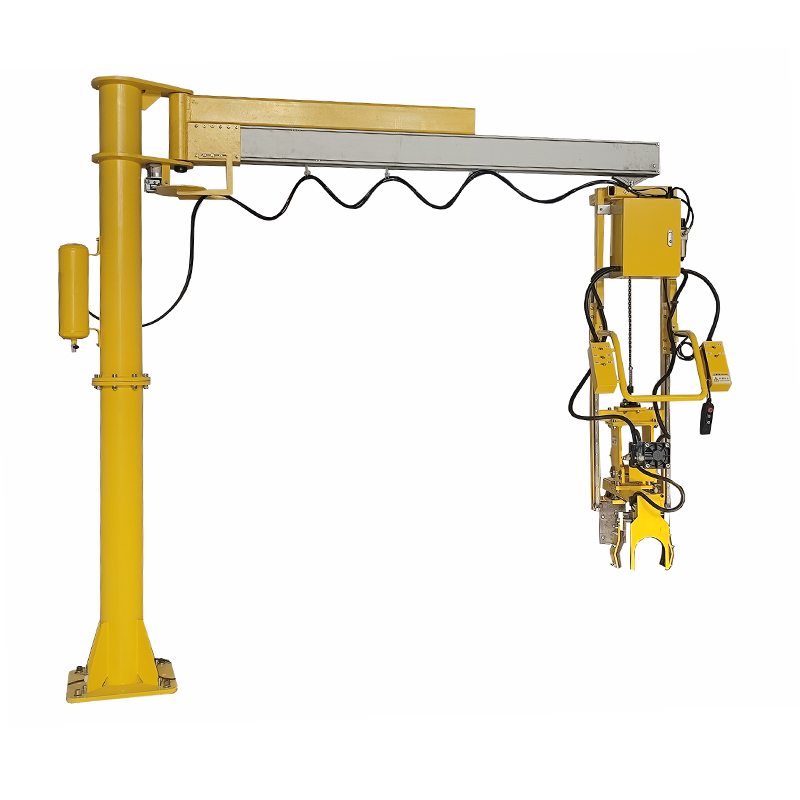Cantilever crane manipulator is an industrial manipulator mounted on a cantilever structure, designed to provide auxiliary force for operators to carry and operate various workpieces more easily, safely and efficiently. It balances or offsets the weight of the workpiece, allowing the operator to lift, move and position the heavy object with only a small amount of force.
Cantilever crane manipulators usually use one or more of the following principles to achieve force balance:
Pneumatic balance: compressed air is used to drive the cylinder to produce a reaction force equal to the weight of the load. The operator adjusts the balancing force by controlling the air pressure valve to achieve easy handling.
Electric balance: servo motors and sensor systems are used to accurately control the output torque to offset the changes in load weight in real time. This method usually has a higher level of precision and intelligence.
Main features and advantages:
Reduced labor intensity: significantly reduce the physical strength required by operators when carrying heavy objects, reduce fatigue and work-related injury risks.
Improve production efficiency: faster and smoother operation, shorten handling and assembly time, and improve overall production efficiency.
Ensure operational safety: reduce errors and safety accidents that may be caused by manual handling of heavy objects.
Precise positioning: Assist operators to more accurately position and assemble workpieces, improving product quality.
Flexible operation: The cantilever structure provides a large working range and flexible movement capabilities.
Strong adaptability: Workpieces of various shapes and materials can be handled by replacing different end effectors (clamps, suction cups, magnetic suction cups, etc.).
Space saving: Cantilever crane manipulators usually take up less floor space than ground mobile manipulators.
Easy to operate: The design is usually ergonomic and the operation is simple and intuitive.
Main application scenarios:
Cantilever crane manipulators are widely used in various industrial fields that require frequent handling and positioning of medium-weight workpieces, such as:
Automobile manufacturing: Handling and assembly of parts, such as engines, gearboxes, car doors, etc.
Aerospace industry: Handling and assembly of aircraft parts.
Machinery manufacturing: Loading and unloading of machine tools, handling and assembly of workpieces.
Home appliance manufacturing: Handling and assembly of home appliances.
Logistics and warehousing industry: Handling and stacking of goods.
Food and beverage industry: Handling of raw materials and finished products.
Pharmaceutical industry: handling of raw materials and medicines.
